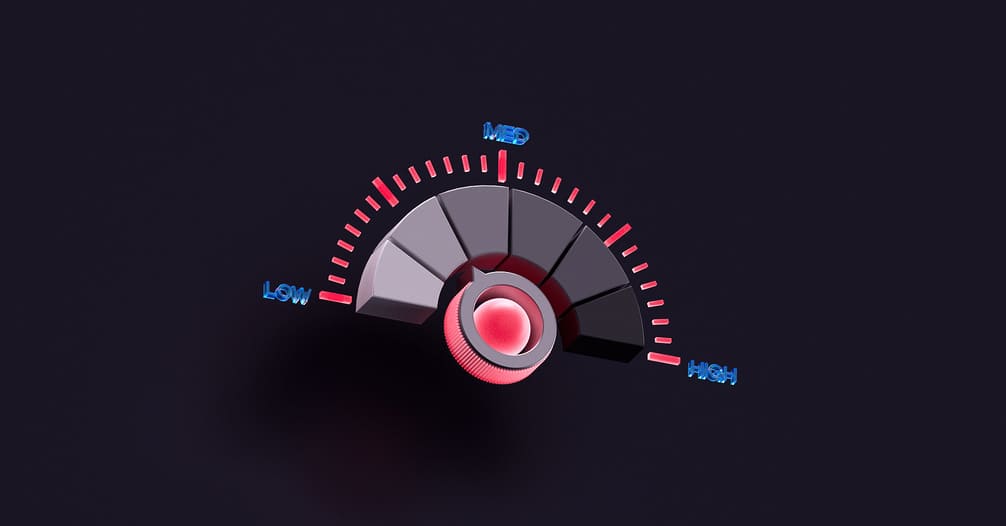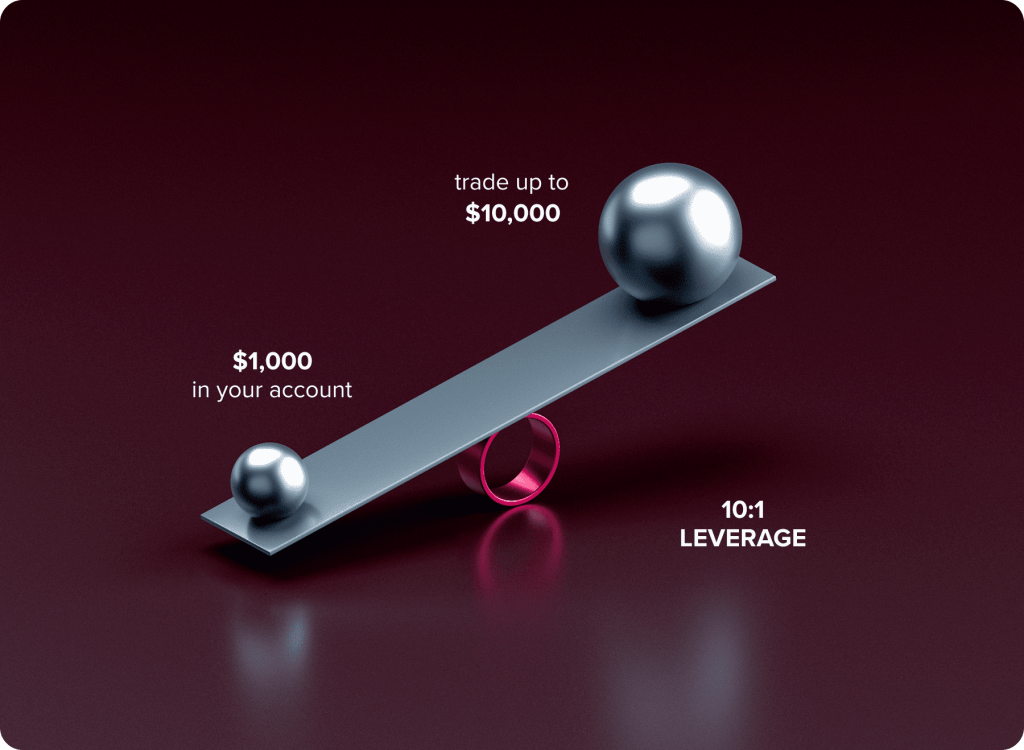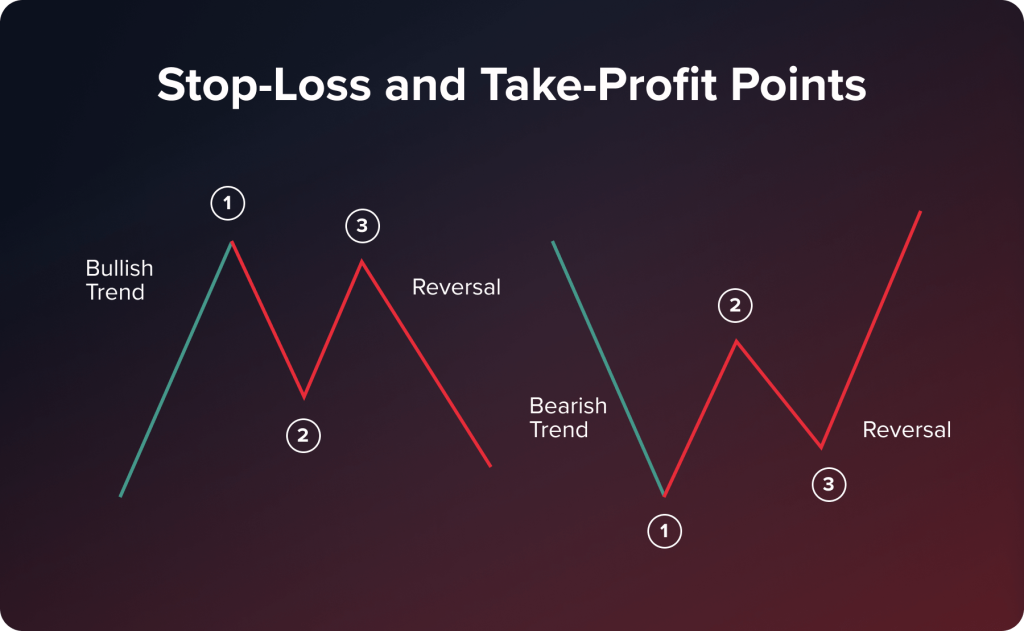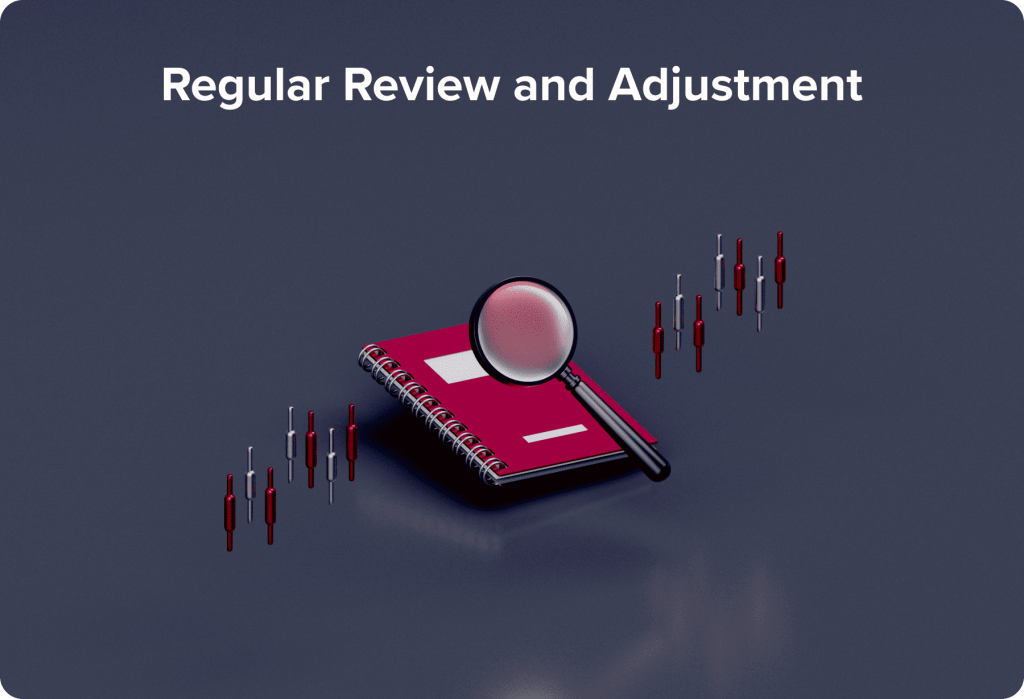
¿Qué es la gestión de riesgos en el trading y cómo funciona?
Contenidos
La gestión de riesgos en el trading se trata de las prácticas que adoptan los traders para reducir posibles pérdidas y proteger su capital a través de estrategias de gestión de riesgos que consisten en usar diversificación, órdenes de stop loss, palancas y revisar las operaciones a intervalos regulares, especialmente después de perder operaciones, con el fin de capturar oportunidades en condiciones cambiantes del mercado.
Básicamente, la gestión de riesgos consiste en la concientización, evaluación y gestión de posibles pérdidas en las operaciones. En el trading, la gestión de riesgos no solo consiste en protegerse a uno mismo y a los fondos, sino que también es un componente esencial de las buenas estrategias. El siguiente artículo analizará cómo la gestión de riesgos puede ayudar a proteger el dinero y garantizar el éxito en las operaciones.
Puntos clave
- La gestión del riesgo es una función necesaria para la protección del capital y la reducción de pérdidas en las operaciones.
- Las herramientas de riesgo, como las órdenes de stop loss, el control del apalancamiento y la diversificación de carteras, existen para limitar la exposición.
- La relación riesgo-recompensa es una herramienta para evaluar el posible rendimiento de una operación frente a las posibles pérdidas antes de iniciar una operación.
- Revisar las estrategias periódicamente garantiza que su enfoque refleje los cambios en el mercado, así como sus objetivos de rendimiento.
- Una mejor gestión del riesgo desarrolla la disciplina, reduce el comercio impulsado por las emociones y aumenta las posibilidades de rentabilidad a largo plazo.
Principios básicos de la gestión de riesgos
La gestión de riesgos se sustenta en diversos principios que abordan diversos aspectos del riesgo asociado con el trading. Estos principios son la base de un plan sólido de gestión de riesgos. Al comprenderlos e implementarlos eficazmente, los operadores pueden tomar decisiones bien informadas, mantener una cartera equilibrada y minimizar las posibles pérdidas, a la vez que maximizan las oportunidades de obtener ganancias.
Principio 1: Diversificación
En el mundo del trading y el control de riesgos, la diversificación es un concepto fundamental. Consiste en distribuir los activos entre los mercados e instrumentos para minimizar el impacto del bajo rendimiento de un activo en toda la cartera.
Distribuyendo las inversiones entre sectores y clases de activos Con diferentes reacciones a los cambios económicos, la diversificación busca esencialmente ofrecer protección contra el carácter turbulento y a menudo errático de los mercados. Por ejemplo, un área puede estar perdiendo valor mientras que otro sector está en auge, preservando así el equilibrio en el rendimiento de la cartera de inversiones. Si el sector tecnológico atraviesa dificultades, el sector sanitario puede estar prosperando, y viceversa. En este sentido, el desarrollo de una región podría compensar las fluctuaciones o caídas de la economía de otro país.

Implementación de una cartera diversificada
Crear una cartera de inversión integral requiere comprender las relaciones entre los distintos activos y cómo afectan al riesgo total de la cartera, no solo la elección de diferentes activos. También implica la combinación de equivalentes de efectivo, acciones, bonos y materias primas. Además, la diversificación implica equilibrar las inversiones en sectores como tecnología, salud, finanzas y bienes de consumo para minimizar los riesgos y mejorar la estabilidad de la cartera.
Agregar diversificación geográfica proporciona un nivel de protección al distribuir las inversiones entre varios países y regiones para mitigar el impacto de la crisis económica en áreas específicas. Este enfoque es vital en el mercado interconectado de hoy, donde los eventos políticos en una región pueden causar efectos en todo el mundo.
Equilibrar la cartera
Gestionar el riesgo requiere diversificar sus activos. Sin embargo, es importante encontrar el equilibrio para evitar diversificarse demasiado y reducir potencialmente su potencial de ganancias. Lograr este equilibrio exige comprender los mercados y las industrias, y puede implicar afrontar complejidades adicionales, especialmente al invertir internacionalmente.
La diversificación como un proceso continuo
Es importante saber que la diversificación no es una configuración única, donde simplemente se establece una vez y luego se olvida por completo, porque así como los mercados cambian con el tiempo, los planes de diversificación también deben evolucionar en consecuencia, verificando y adaptando la cartera de inversiones para que coincida con la dinámica cambiante del mercado y los objetivos financieros individuales.
En esencia, la diversificación en el trading implica lograr el equilibrio entre minimizar el riesgo y aprovechar el potencial de crecimiento. Para adaptarse a la tolerancia al riesgo y los objetivos de inversión de cada operador, este procedimiento requiere observación y modificación constantes. El uso de estrategias de diversificación ayuda a los operadores a construir una cartera que les permita afrontar con mayor éxito las fluctuaciones de los mercados financieros.
Principio 2: Comprender y gestionar el apalancamiento
El apalancamiento en las operaciones puede aumentar considerablemente las ganancias, pero también amplificar las pérdidas. El apalancamiento implica utilizar dinero prestado para amplificar las ganancias de una inversión. Dado que el apalancamiento suele implicar la toma de fondos prestados, se solapa con los conceptos básicos de... comercio de margen .
Aunque pueda parecer atractiva, esta estrategia exige un enfoque y una estrategia meditados para manejarla adecuadamente.

La mecánica del apalancamiento en el trading
Los operadores utilizan el apalancamiento para gestionar grandes posiciones con un capital disponible relativamente bajo; por ejemplo, con un ratio de apalancamiento de 10x, el operador puede controlar una posición de $10,000 con solo $1,000 de sus propios fondos invertidos. Esta estrategia puede generar ganancias significativas cuando el mercado se mueve a su favor. Sin embargo, también conlleva riesgos, ya que incluso un pequeño cambio desfavorable puede resultar en pérdidas rápidas que superen la inversión inicial.
Navegando los riesgos y las recompensas
El atractivo de obtener mayores ganancias mediante el trading apalancado debe sopesarse frente a los riesgos asociados. El apalancamiento aumenta tanto las ventajas como las desventajas de las operaciones, incrementando así el riesgo para los operadores. Los operadores deben ser conscientes de que, si bien el apalancamiento puede mejorar su poder adquisitivo, también aumenta su riesgo en casos de rápida volatilidad del mercado.
Uso prudente del apalancamiento
Usar el apalancamiento responsablemente implica seguir una serie de prácticas. Antes de que los operadores decidan emplear el apalancamiento en sus operaciones y gestionar de forma segura los niveles de riesgo, es fundamental que evalúen los riesgos potenciales que conlleva el uso del apalancamiento, observando las condiciones actuales del mercado y siendo conscientes de la posibilidad de fluctuaciones repentinas y significativas. Es crucial que los operadores mantengan suficiente capital disponible para cubrir cualquier ajuste de margen y evitar sobreextenderse financieramente. También es necesario comprender la dinámica del mercado y tener amplia experiencia en trading, considerando los complejos detalles de las fluctuaciones del mercado y cómo el apalancamiento influye en los diversos tipos de activos.
El apalancamiento como herramienta estratégica
El apalancamiento se considera sin duda un activo y una fuerza positiva para los operadores, aunque conlleva riesgos. Los operadores con experiencia incorporan el apalancamiento en sus... estrategia comercial along with risk management methods to enhance their estrategia comercial as a whole. Trading leverage can be a tool with both benefits and drawbacks to consider carefully before diving in headfirst.
Principio 3: Establecer puntos de stop-loss y take-profit
Las órdenes de stop-loss y take-profit actúan como mecanismos de control que protegen la cartera del operador. Estas herramientas no son meros mecanismos para gestionar transacciones; son esenciales para reforzar la disciplina y la planificación estratégica en el frecuentemente turbulento mundo del trading.

El papel de las órdenes de stop loss
Generalmente colocados en un punto en el que están listos para asumir una pérdida específica, pero no más allá de eso, los traders usan órdenes de stop loss para cancelar posiciones en un nivel de precio predefinido, limitando así las posibles pérdidas en las transacciones.
Imagine esto: un operador paga $50 por una acción con la esperanza de que suba su valor de mercado. Considerando la volatilidad del mercado, el operador ordena un stop loss en $45 para limitar las pérdidas si el precio de la acción cae a ese nivel, garantizando así la contención de las pérdidas y el cierre de la posición. En mercados donde los precios fluctúan rápidamente y la acción manual puede no ser lo suficientemente rápida, este enfoque es especialmente vital.
La importancia de las órdenes de toma de ganancias
Por el contrario, una orden de toma de ganancias busca garantizar ganancias al cancelar la transacción al superar un nivel de ganancias predefinido. Esto permite a los operadores maximizar las ganancias sin ceder a la avaricia ni a la ansiedad de perder ganancias.
Un operador puede, por ejemplo, establecer una orden de toma de ganancias para una acción comprada a $50 y vendida a $60. El proceso se ejecuta cuando la acción alcanza ese precio, garantizando así la ganancia. Cuando un operador no puede monitorear el mercado y se asegura de no perder oportunidades de obtener ganancias de las fluctuaciones de precios, esta función es extremadamente útil.
Equilibrio entre riesgo y recompensa
Equilibrar el riesgo y la recompensa es el objetivo principal de las órdenes stop loss y take profit. Permiten a los operadores establecer objetivos de tolerancia al riesgo y ganancias, a la vez que ofrecen un método de trading que no requiere una observación constante del mercado ni depender excesivamente de las emociones al tomar decisiones.
En un mercado donde los precios suben durante una tendencia alcista, los operadores pueden modificar estas órdenes según sus planes de trading y estrategias de evaluación del mercado. Por ejemplo, un operador puede utilizar niveles más altos de toma de ganancias o ajustar las órdenes de stop loss a precios más altos para maximizar las ganancias potenciales y, al mismo tiempo, gestionar eficazmente el riesgo de pérdidas.
Implementación estratégica
Para implementar correctamente los puntos de stop loss y take profit, primero es necesario comprender los patrones del mercado y desarrollar una estrategia de trading propia. Al elegir la firmeza o laxitud con la que colocar estas órdenes, es necesario considerar las opciones disponibles. Colocarlas demasiado cerca podría resultar en un cierre prematuro de la operación, pero colocarlas demasiado lejos podría resultar en una exposición excesiva al riesgo.
Establecer órdenes de stop loss y take profit va más allá de la gestión de riesgos; demuestra la actitud del operador hacia el mercado, así como su disciplina y comprensión de la dinámica del trading. Al colocar estas órdenes, los operadores pueden navegar con confianza por las complejidades del mercado, sabiendo que sus inversiones y ganancias están protegidas.
Principio 4: Relación riesgo-recompensa
Una forma de evaluar el riesgo de una operación es analizar la relación riesgo-beneficio. Esta ayuda a los inversores a sopesar las posibles ganancias y pérdidas en una transacción determinada. Una relación riesgo-beneficio de 1:3 indica que un operador está dispuesto a arriesgar $1 con la esperanza de ganar $3. Con esta relación, los operadores pueden determinar qué opciones se adaptan a sus objetivos de trading y a su tolerancia al riesgo.

Aplicación en estrategias comerciales
Los enfoques, estrategias y decisiones en el trading se ven influenciados por la relación riesgo-recompensa. Para evaluar el probable éxito de una operación, los operadores analizan la relación riesgo-recompensa. Una operación que presenta esta relación suele atraer interés y se ajusta a un enfoque estratégico centrado en la gestión prudente del riesgo, buscando resultados rentables.
Los operadores utilizan la relación riesgo-recompensa para evaluar el potencial de una operación antes de comprometerse con ella. Calcular la relación riesgo-recompensa también requiere comprender los costos de la operación, como se extiende En términos generales, una operación con una buena relación es más atractiva, ya que se ajusta a un plan que busca equilibrar eficientemente el riesgo con las posibles ganancias.
Esta estrategia se centra en sopesar los riesgos y las recompensas para tomar decisiones de trading bien pensadas que consideren cuidadosamente tanto los resultados positivos como los negativos. Resalta la importancia de tomar decisiones inteligentes al operar en mercados cambiantes e inciertos. Al considerar esta relación riesgo-recompensa al operar con acciones o activos, los inversores pueden desarrollar planes que no solo mitiguen los riesgos, sino que también busquen ganancias sustanciales, lo que en última instancia resulta en un enfoque de trading estable y duradero.
Adaptación a estilos de trading individuales
Los operadores tienen preferencias en cuanto a la relación riesgo-recompensa según su tolerancia al riesgo y su enfoque de trading en diversas condiciones de mercado. Algunos optan por un enfoque cauteloso, mientras que otros adoptan una postura más audaz. La clave está en encontrar una relación que se ajuste a sus creencias de trading y a su visión del mercado.
Principio 5: Revisión y ajuste periódicos
En un mundo donde los mercados cambian constantemente y se adaptan a nuevas condiciones y tendencias, es crucial que los operadores reevalúen y refinen continuamente sus estrategias de gestión de riesgos. Esto no es solo un ejercicio. Es una práctica que garantiza que las estrategias se mantengan eficientes y respondan a las fluctuaciones del mercado.

La necesidad de revisiones periódicas de la estrategia
En el mundo de las finanzas y las inversiones, navegar por los mercados es como resolver un rompecabezas que cambia todo el tiempo, por lo que es vital reevaluar constantemente sus estrategias a través de revisiones periódicas, ya que juegan un papel clave para garantizar el éxito y la adaptabilidad en este entorno dinámico.
- Mantenerse informado sobre los desarrollos del mercado
Los mercados pueden fluctuar rápidamente debido a factores como actualizaciones de datos, eventos geopolíticos o cambios en la percepción de los inversores. Es fundamental mantenerse informado sobre estas tendencias para ajustar sus estrategias de trading en consecuencia.
- Análisis del rendimiento de las estrategias actuales
Un aspecto crucial consiste en evaluar la eficacia de las tácticas existentes a la luz del entorno del mercado para obtener conocimientos sobre su éxito y las áreas de mejora que puedan ser necesarias.
- Identificación de nuevos riesgos y oportunidades
Una evaluación de situaciones y circunstancias también requiere estar atento a los desafíos y posibles oportunidades futuras. A medida que el panorama del mercado cambia con el tiempo, pueden surgir nuevas dificultades que exijan una reevaluación y un ajuste de las estrategias de gestión de riesgos. Asimismo, podrían surgir nuevas oportunidades que antes no se habían considerado.
Flexibilidad: la clave para la adaptación
En estas revisiones y reajustes, la clave reside en la flexibilidad. La apertura mental al cambio y el ajuste de estrategias en función de la información o las condiciones cambiantes del mercado son clave. La flexibilidad en el trading va más allá de ajustar números o cambiar posiciones. Obliga a revisar la tolerancia al riesgo, que puede variar según la situación personal y la volatilidad del mercado. Revise y modifique su plan de trading según sea necesario para asegurarse de que se ajuste a sus objetivos y al estado del mercado.
Además, la flexibilidad implica realizar las revisiones necesarias basándose en la información obtenida del análisis de mercado y las evaluaciones del rendimiento de las estrategias actuales. Por ejemplo, un operador puede considerar conveniente ajustar sus posiciones de inversión, refinar sus órdenes de stop loss y take profit, o explorar clases de activos o sectores. Esta capacidad de adaptación es crucial en el trading, ya que las circunstancias del mercado pueden cambiar de forma abrupta e impredecible. Es necesario ser adaptable y reaccionar con rapidez, y estar preparado para gestionar los cambios con una estrategia sólida pero flexible, capaz de adaptarse a un entorno de trading en constante evolución.
Su lista de verificación de gestión de riesgos
Utilice esta lista de verificación como su guía de inicio rápido para reducir el riesgo y fomentar la disciplina en cada operación:
- Coloque órdenes de stop-loss y take-profit con cada operación
- Utilice un tamaño de posición adecuado para su capital y tolerancia al riesgo
- Evite el apalancamiento excesivo: nunca arriesgue más de lo que puede permitirse perder.
- Asigne capital entre clases de activos, sectores y regiones para diversificar su cartera
- Revise y recalibre su estrategia periódicamente, en función de su desempeño y los cambios en el mercado.
Por qué es importante la gestión de riesgos en el mercado de 2025
En 2025, los mercados financieros serán los más riesgosos que hemos visto hasta la fecha. La incertidumbre geopolítica, las altas tasas de interés y la generalización de la IA (por ejemplo, algoritmos que ejecutan operaciones automáticamente; existe un ecosistema dinámico y arriesgado) están reduciendo los márgenes de error tanto para los operadores minoristas como para los institucionales.
La gestión de riesgos no es algo que se desea tener... es un velo de supervivencia.
Los operadores deben adoptar enfoques proactivos para proteger su exposición al capital, gestionar la exposición a la volatilidad y adaptarse a las fluctuaciones repentinas del mercado. Ya sea trabajando en cambios de política pospandemia, cambios en el flujo comercial del trading algorítmico o desvinculándose de la economía global, la gestión de riesgos permitirá un trading disciplinado, consistente y competitivo.
En el mercado actual, no tener una política de riesgos es en sí mismo un riesgo.
Errores frecuentes en la gestión de riesgos (y cómo evitarlos)
Para evitar transacciones emocionales es necesario tener un fuerte conocimiento de psicología del trading Incluso los traders experimentados pueden caer en trampas psicológicas o cometer errores de comisión, pero detectar estos errores comunes es el comienzo de una estrategia de trading sólida.
Apostar demasiado en las oscilaciones del mercado
El exceso de operaciones suele estar asociado con la realización de operaciones adicionales durante movimientos volátiles del mercado.
Consejo: Cíñete a tu plan de trading y realiza el máximo número de operaciones diarias. Mantén los parámetros de riesgo que estableciste. Todas estas operaciones adicionales realizadas en el bullicio del mercado serán decisiones impulsivas.
No utilizar órdenes de stop-loss
Saltarse las órdenes de stop loss pone en riesgo su capital por pérdidas ilimitadas cuando lo toman por sorpresa durante caídas repentinas en el mercado.
Consejo: Siempre debe haber una orden de stop loss antes de abrir una posición. Debe basarse en un análisis técnico, no en pérdidas para el contribuyente. Si necesita ajustar su stop loss, hágalo a medida que avanza la operación.
Comercio de venganza
Una vez que se sufre una pérdida, el deseo de "recuperarla" a menudo da lugar a errores aún mayores, sobre todo cuando se tiene sensación de urgencia, miedo o frustración.
Consejo: Tras una pérdida, tómate un descanso. Reflexiona sobre tu plan de trading y qué necesitas mejorar, y piensa solo en volver al mercado con la mente despejada.
La relación riesgo-recompensa
Es necesario comprender bien la relación riesgo-beneficio antes de operar. Si abre una operación sin identificar las posibles ventajas y desventajas, habrá distorsionado todas sus posiciones, tanto ganadoras como perdedoras.
Conclusión
La gestión de riesgos comerciales es compleja y requiere más que conocimientos teóricos. Operar en mercados financieros volátiles requiere que los operadores cuenten con herramientas avanzadas de gestión de riesgos, habilidades analíticas y fortaleza psicológica para tomar decisiones disciplinadas. Estos diversos aspectos pueden combinarse en un enfoque unificado de gestión de riesgos para ayudar a los operadores a sortear la complejidad y la volatilidad de los mercados financieros, convirtiendo la gestión de riesgos de una táctica defensiva en una estrategia comercial clave.
FAQ
Un ejemplo típico de gestión de riesgos en el trading es el stop loss. Un ejemplo de stop loss es cuando un operador compra una acción a $100 y luego fija un stop loss en $95. Por lo tanto, si el precio de la acción cae a $95, la posición se cierra automáticamente al precio de mercado, lo que limita la pérdida del operador al 5%. Esto no solo ayuda a gestionar el riesgo, sino que también elimina la emoción al tomar decisiones y permite conservar el capital en mercados volátiles.
La relación riesgo-recompensa ayuda a un operador a determinar si vale la pena operar. Por ejemplo, si opera con una relación riesgo-recompensa de 1:3, podría ganar $300 por cada $100 arriesgados. Incluso si un operador ha tenido una mala racha de operaciones perdedoras, si desarrolla la disciplina para operar con una buena relación riesgo-recompensa, puede ser rentable.
– Un stop-loss cerrará automáticamente la operación cuando baje al precio de pérdida establecido. – Una orden de toma de ganancias cierra la posición del operador cuando se alcanza un objetivo preestablecido, asegurando la ganancia. – Ambas ofrecen automáticamente a los operadores una estrategia de salida y eliminan la angustia emocional.
Un principiante puede gestionar el riesgo al operar: – Empieza con una cuenta demo para practicar. – Usa un apalancamiento bajo o opera sin apalancamiento. – Establece límites claros de stop-loss y take-profit. – Diversifica las operaciones y los métodos en todos los valores. – Nunca arriesga más del 1-2% de tu capital por operación. – Revisa regularmente tu estrategia en función del rendimiento.
Actualizado:
25 de julio de 2025



